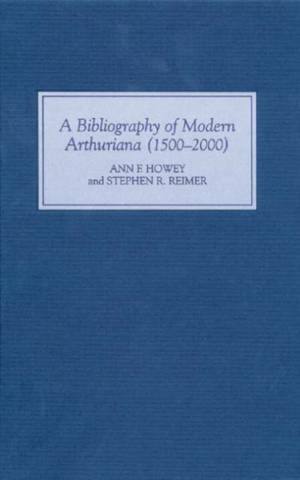
- Afhalen na 1 uur in een winkel met voorraad
- Gratis thuislevering in België vanaf € 30
- Ruim aanbod met 7 miljoen producten
- Afhalen na 1 uur in een winkel met voorraad
- Gratis thuislevering in België vanaf € 30
- Ruim aanbod met 7 miljoen producten
Zoeken
€ 354,45
+ 708 punten
Omschrijving
In the 1470s, Thomas Malory drew together for the first time in English a variety of Arthurian stories from a number of sources in at least two languages. Since Caxton's publication of Malory's text in 1485, the Arthurian legend in the English-speaking world has experienced sometimes neglect and mockery, but frequently great interest and re-imagination. Since the time of Tennyson in particular, Arthur and Guenevere have drawn increasing numbers of characters into their sphere of influence; similarly, increasing numbers of, not only authors and dramatists, but painters, musicians, and film-makers have paid allegiance to the legendary king and queen. This interdisciplinary, annotated bibliography lists, as comprehensively as we can, the uses of the Arthurian legend in modern English-language fiction, from 1500 to 2000, including literary texts, film, television, music, visual art, and games. This bibliography is intended for the use of students of literary and visual arts, general readers, collectors, librarians, and cultural historians--that is, by anyone interested in the history of the ways in which Camelot has figured in post-medieval English-speaking cultures. Ann F. Howey is Assistant Professor at Brock University, Canada Stephen R. Reimer is Associate Professor at the University of Alberta, Canada
Specificaties
Betrokkenen
- Auteur(s):
- Uitgeverij:
Inhoud
- Aantal bladzijden:
- 804
- Taal:
- Engels
Eigenschappen
- Productcode (EAN):
- 9781843840688
- Verschijningsdatum:
- 1/11/2003
- Uitvoering:
- Hardcover
- Formaat:
- Ongenaaid / garenloos gebonden
- Afmetingen:
- 162 mm x 235 mm
- Gewicht:
- 1383 g

Alleen bij Standaard Boekhandel
+ 708 punten op je klantenkaart van Standaard Boekhandel
Beoordelingen
We publiceren alleen reviews die voldoen aan de voorwaarden voor reviews. Bekijk onze voorwaarden voor reviews.











